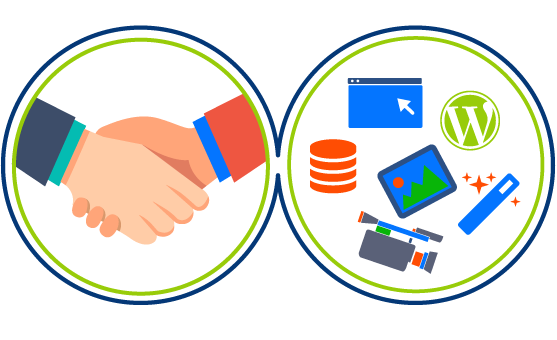We are all familiar with the word training in a business context and for many years it has been the main term used when looking at growing the skills of people inside a business, but this puts the emphasis the wrong way around.
It is reckoned that only around 25% of training programs measurably improve business performance and that people forget 40% of what they have learned after 20 minutes and over 60% after 9 hours.
If you really want to maximise knowledge take-up and retention, you need to focus on the learner and not the training. You need to enable a paradigm shift from delivering training to enabling learning and the important point here is that they are not the same thing.
Training – The action of teaching a person a particular skill or type of behaviour.
Learning – The acquisition of knowledge or skills through study, experience, or being taught.
Is there really a difference between delivering training and enabling learning?
![]() Absolutely! There are major differences both in what is provided to the learner and how and when they learn.
Absolutely! There are major differences both in what is provided to the learner and how and when they learn.
According to a recent ATD research study, over 60% of HR managers believe they are not doing a good job meeting the learner’s needs.
The norm in many businesses is to deliver classroom based training, often with material that has been in use for quite some time (maybe even developed by somebody who has left the organisation) and which hasn’t seen much in the way of updates for several years – seem familiar?
The classroom training may have people from different parts of the business, with different roles and therefore different learning needs and classroom durations running from a half day to several days. In our experience, a lot of the classroom based material in organisations is dated, overly long, poor in terms of design and often attempts to cover a huge range of content whilst there is a captive audience – quantity over quality!
Nowadays, the titles for those responsible for developing talent within an organisation contain words such as learning and development rather than training – a good move forward but this doesn’t necessarily mean that anything has really changed?
Let’s take a look at some of the fundamental differences between the two approaches.
Delivering Training:
![]()
- The trainer is in control
- Focuses on the training not the individual
- Usually classroom based
- Often a half day to several days in the classroom
- Delivered to a room that may contain a variety of roles and responsibilities
- PowerPoint slides with lots of bullet points and text
- Often a one size fits all approach
- It is difficult to gauge the success of the training
Enabling Learning:

- Focuses on the individual – the learner
- Presents a variety of ways in which to learn
- Uses engaging and interactive media
- The learner is in control
- Delivered at a time, place and pace that suits the learner
- Offers appropriate material for the learner and their role
- Provides a variety of learning tools to support learning including job aids, videos, workshops and eLearning materials
- On the job or in the field learning provides great learning opportunities
- Bite sized refreshers help overcome the retention roll off – we call them Learning Snapshots
In this article, I wanted to challenge the more ‘traditional’ way of developing people in an organisation and briefly look at how making changes in delivery might help enable effective learning across your organisation
Here are some thoughts on beginning the transition from delivering training to enabling learning:

- Put the learner first
- Identify the learning outcomes required
- Look for ways in which these outcomes can be best met
- Develop learning for the time, place and pace that best suits the learner
- Examine your current training materials and re-purpose them to enable learning
- Introduce a blended learning approach
- Remember, don’t be frightened to change what you have been doing
- Introduce knowledge checks along the learning journey
- Introduce bite sized pieces as well as more in depth solutions
- Consider the flipped classroom approach
- Measure and analyse the changes you have made and be prepared to adapt
- Enjoy enabling new ways for your teams to learn 😊
I hope this article has stimulated some thoughts around considering new ways to enable learning within your organisation.
Can I show you how we have put some of the ideas examined above into practice for other organisations?
Contact Us






















